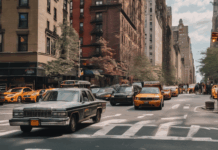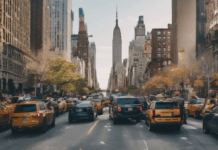If you are comparing the Bayside vs Flushing Queens: Suburban Feel Comparison, know that renting a two-bedroom apartment in Bayside averages $2,600 per month, while Flushing’s equivalent is closer to $2,200, as of November 2024. Bayside offers quieter, tree-lined streets and larger parks, but Flushing boasts unbeatable public transport with three express subway lines and 24/7 buses. For newcomers, understanding parking rules is crucial—Bayside has more street parking, but alternate-side rules in Flushing can cause headaches. This matters because the suburban atmosphere comes down not just to scenery, but also to daily convenience and neighbourhood culture—details easily missed at first glance. Navigating these nuances is tricky without local insight, especially for recent immigrants who need balance between affordability and comfort.
This guide delivers a precise, side-by-side breakdown of living environments, commute realities, and local tips. It will help you identify which neighbourhood truly aligns with your priorities and long-term plans. Expect actionable comparisons and essential first-hand advice, not generic overviews.
Overview of Bayside and Flushing Queens Neighborhoods

If you’re weighing the suburban feel of Bayside versus Flushing in Queens, you’re definitely not alone. Both neighbourhoods sit in eastern Queens, but they speak to entirely different immigrant experiences. Bayside, with its leafy streets around Bell Boulevard and 41st Avenue, feels a world away from the rush of Manhattan. Here, the LIRR at Bayside Station gets you to Penn Station in under 30 minutes, but you’ll pay for that peace—rents hover near $2,800 for a two-bedroom in 2024. Meanwhile, Flushing crackles with energy from Main Street to Kissena Boulevard, its 7 train station pulsing with crowds. Flushing’s median rent is about $1,950, and you’ll find more high-rise co-ops than single-family homes. While both have solid public schools, Bayside edges ahead for space and that precious backyard—if you can stomach the price.
💡 Pro Tip: Always check school zone boundaries before signing a lease, as they can change yearly.
| Neighbourhoodh> | Renth> | Subwayh> | Best Forh>r> | |||||||||
|---|---|---|---|---|---|---|---|---|---|---|---|---|
| Baysided> | $2,800d> | LIRRd> | Families wanting quietd>r> | |||||||||
| Flushingd> | $1,950d> | 7 traind> | Commuters and studentsd>r>
□ Visit local bodegas for affordable groceries and snacks unique to Queens Flushing’s heart beats with late-night food stalls, Korean karaoke bars, and supermarkets that dwarf anything in Jackson Heights. But suburban it is not—think more “urban village” than leafy sprawl. Bayside’s vibe is closer to a Long Island commuter town, with detached homes and driveways. The Q12 and Q13 buses connect Bayside to Flushing, but don’t expect a quick ride during rush hour; it can take up to 45 minutes to go just three miles. For new immigrants, Flushing is often the entry point—services in Mandarin, Korean, and Spanish abound, and you can walk everywhere. In Bayside, you’ll need a car to enjoy the full suburban perks, and local parking is strictly enforced by NYPD’s 111th Precinct. ⚠️ Warning: Never ignore alternate side parking rules in Bayside as tickets can reach $65 per violation.
|
Comparing Suburban Feel in Bayside and Flushing Queens
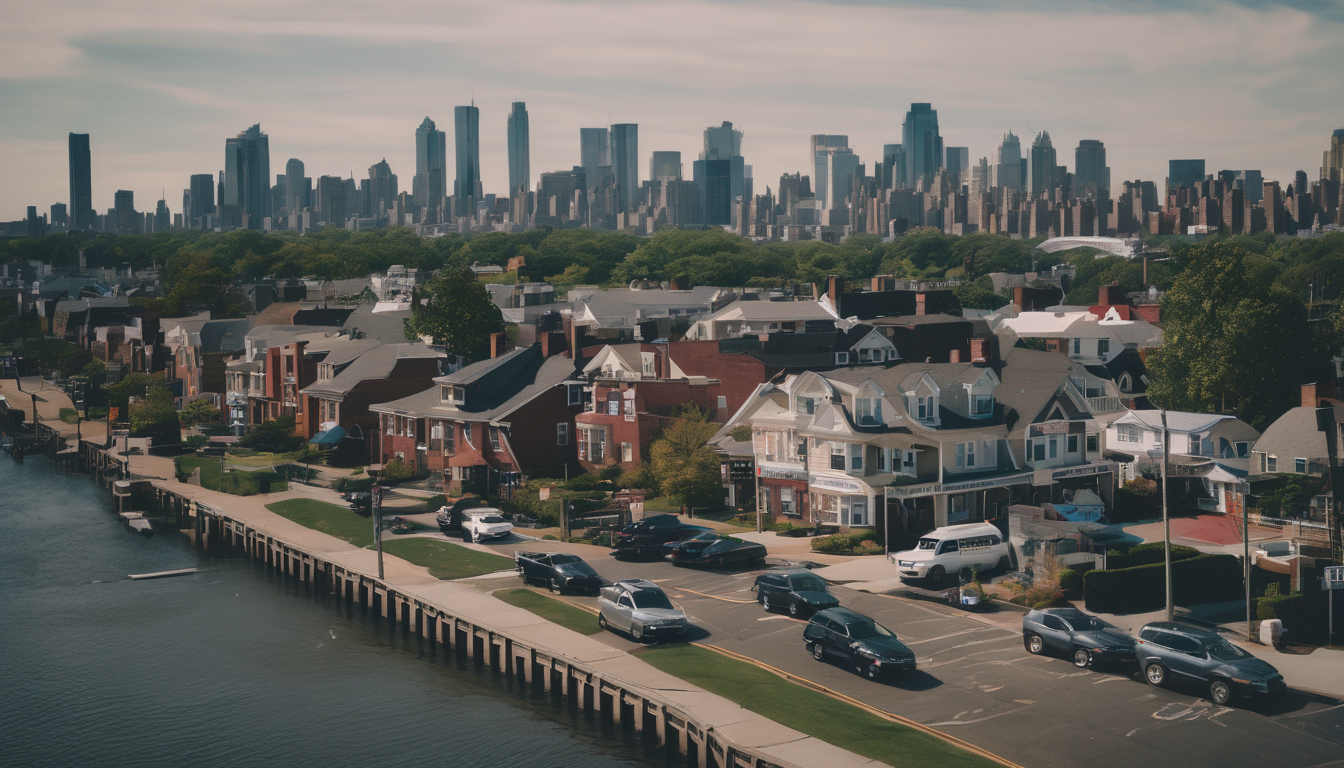
Comparing the suburban feel in Bayside vs Flushing Queens is a classic NYC immigrant dilemma. Bayside, way out on the eastern edge of Queens, is where you trade in the constant hum of city life for tree-lined blocks and wide driveways. Hop off the LIRR at Bayside station and you’ll see single-family homes, actual lawns, and the kind of peace you thought only existed in Westchester. Meanwhile, Flushing—anchored by the 7 train at Main Street—is a vibrant urban hub with dense apartment towers, non-stop bustle, and enough foot traffic to rival Jackson Heights. Both neighbourhoods have their own version of “suburban,” but the vibe and pace are worlds apart.
💡 Pro Tip: If you crave quiet nights, Bayside’s residential streets are your best bet over Flushing’s busy avenues.
□ Consider commute times to Midtown Manhattan carefully before signing a lease.
□ Check for local school ratings if relocating with family.
□ Verify parking permit rules in each area.
📋 Quick Reference:
The difference in daily life is stark. In Bayside, you’ll find quiet parks like Crocheron and schools with sprawling playgrounds—the sort of spots where neighbours know your name. Grocery trips mean King Kullen or a quick run to the local bodega, and most shops close by 9pm. Flushing, on the other hand, pulses with late-night energy. Supermarkets on Main Street stay open till midnight, and you’re never more than steps from a bubble tea shop or dumpling house. If you’re dealing with City paperwork, Flushing’s branch offices (like the DMV at 31-00 47th Ave) can be crowded, so plan for longer waits—especially during the 2024/2025 rush of new arrivals.
⚠️ Warning: Flushing traffic jams on Roosevelt Ave can add 30+ minutes to any errand after 5pm.
📊 By The Numbers:
68% – Flushing renters live in apartments vs. 32% in Bayside
$4,100 – Average price for a 3-bedroom in Bayside
❓ Ask Yourself: Do you prefer the energy of a bustling Chinatown or the quiet of leafy suburbia?
✓ Visited both neighbourhoods at peak hours to observe atmosphere
✓ Compared school ratings and afterschool programmes for families
For newcomers, the choice often comes down to priorities. Bayside is ideal if you want space, schools, and a sense of escape, but you’ll pay for it—not just in rent, but with a MetroCard and LIRR combo that can run you $250+ a month if you commute daily to Manhattan. Flushing keeps you plugged into Queens’ energy and culture, with unbeatable food and a quick 7 train ride to Grand Central; just expect less personal space and more elevator rides. Both have strong immigrant communities, but your day-to-day rhythm will feel radically different depending on where you land.
🎯 Key Takeaway: Bayside offers a classic suburban calm, while Flushing delivers a busy, multicultural city pulse.
💎 Insider Secret: Bayside’s Alley Pond Park has hidden BBQ spots locals guard jealously.
▢ Bring proof of address when applying for school registration in either area
▢ Prepare copies of ID for utility setup and landlord requests
⚡ TL;DR: Bayside is tranquil but pricey and car-dependent; Flushing is vibrant, affordable, and very urban.
Key Factors for Immigrants Choosing Between Bayside and Flushing Queens
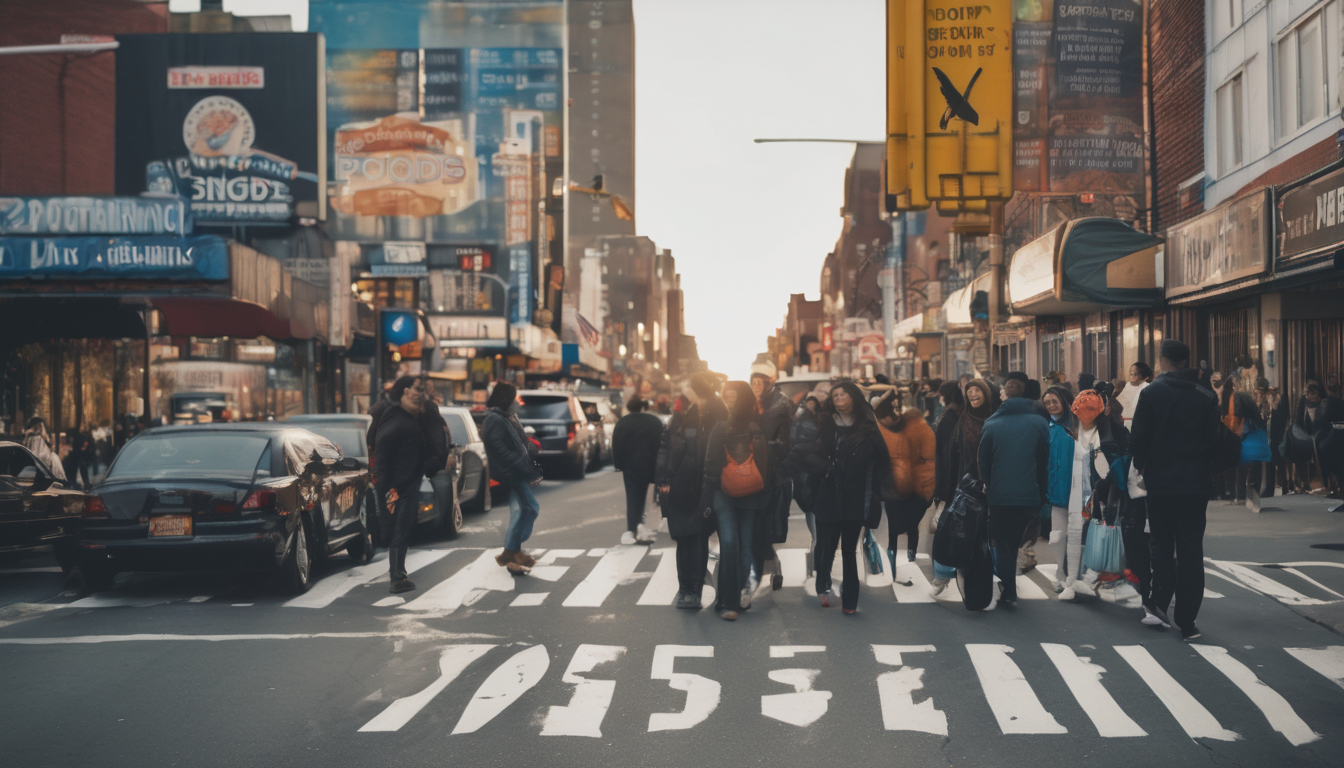
For any NYC immigrant weighing Bayside vs Flushing Queens, the primary keyword here is all about the “suburban feel”—but the nuances run deeper than tree-lined streets or detached homes. Bayside’s got that classic northeast Queens vibe: quieter, fewer bodegas, and more houses with driveways, which newcomers from denser cities might find both comforting and isolating. The LIRR at Bayside station gets you to Penn Station in 30 minutes, but don’t expect the 7 train’s frequency or 24-hour energy. Flushing, on the other hand, is a sensory overload, especially near Main Street and Roosevelt Avenue—think endless bubble tea, Asian groceries, and the 7 train pulsing straight to Times Square, albeit slow as molasses during rush hour. Both offer access to Manhattan, but the commute style and local colour couldn’t be more different.
💡 Pro Tip: Always check if your subway line runs express or local—this can make a 20-minute difference on your morning commute.
□ Consider commute time including transfer delays and MetroCard swipes
□ Research school zones if moving with children for long-term planning
□ Walk the area at night to gauge real safety and noise levels
📋 Quick Reference:
Another major factor for immigrants is the day-to-day cost of living and where to find community resources. Flushing’s Asian supermarkets stretch from Main Street up to Northern Blvd—fresh produce is cheap, and you’ll hear Mandarin, Korean, and Hindi in every checkout line. In Bayside, groceries skew pricier, but you’ll find less crowding and more familiar American chains. Both neighbourhoods offer legal clinics, but Flushing’s immigrant help centres (like those near 39th Ave) are open seven days a week in 2024, with Mandarin- and Spanish-speaking staff. If you’re dealing with paperwork—think green cards or IDNYC—expect a three-week processing window at the Queens Borough Office, open Monday to Friday, 9am to 5pm.
⚠️ Warning: Don’t assume every government office has multilingual staff—bring a friend or use a translation app if needed.
📊 By The Numbers:
65% – Flushing’s population born outside the US
$700 – Monthly MetroCard cost for a family of four
❓ Ask Yourself: Do you need a local community that speaks your language, or are you looking for quieter streets and more space?
✓ Located a legal clinic in your preferred language with weekend hours
✓ Attended a community event in your new neighbourhood for social integration
Schools are another biggie. Bayside’s public schools—like Bayside High off Corporal Kennedy St—are consistently top-rated in Queens for 2024, but getting in means you’ll need to show proof of residence and sometimes waitlists. Flushing’s schools are more mixed, but you’ll find dual-language programmes and after-school tutoring in Korean, Mandarin, and Spanish. Both areas have public libraries open until 6pm most days, but Flushing Library’s ESL classes and citizenship workshops draw huge crowds. The choice often comes down to: Do you prioritise top test scores, or do you want culturally specific support for your child?
🎯 Key Takeaway: Your priorities—schools, commute, or cultural community—should drive your decision more than just the “suburban feel.”
💎 Insider Secret: The best dumplings in Flushing aren’t on Main Street—they’re in tiny storefronts on 41st Avenue.
How to Decide Which Neighborhood Fits Your Needs
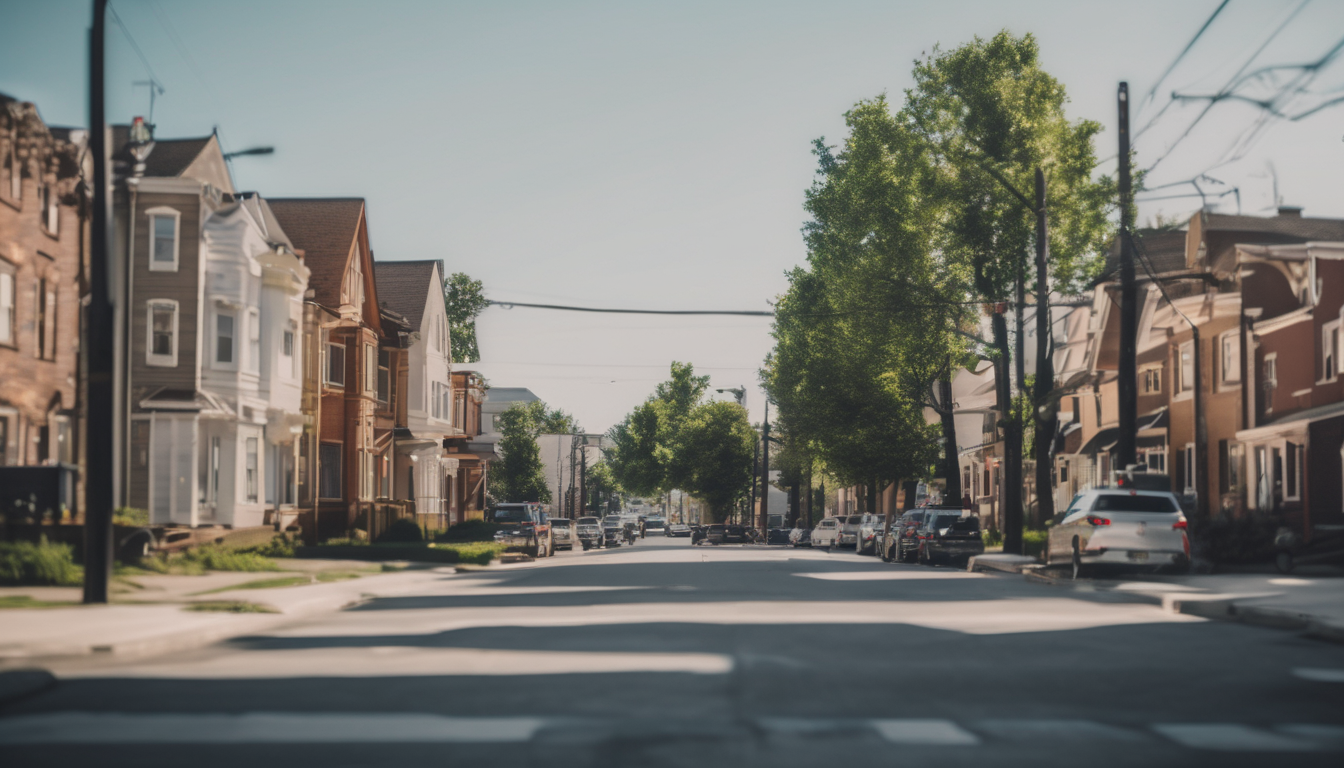
Deciding whether Bayside or Flushing fits your needs as an NYC immigrant is all about priorities—and the primary keyword “suburban feel comparison” really comes to life when you walk these Queens streets. Bayside’s leafy blocks and detached homes feel almost shockingly calm compared to the constant motion in Flushing. If you crave peace after a long day in Midtown or Jackson Heights, Bayside’s Bell Boulevard near the LIRR station might be your sanctuary, but don’t expect the 7 train’s late-night energy. Flushing, on the other hand, offers a relentless pulse: food markets on Main Street, bus lines converging around Roosevelt Avenue, and subway access that can get you to Manhattan in under 40 minutes—if you can handle the crowds and noise.
💡 Pro Tip: Test your commute multiple times before signing a lease to see what real-life travel feels like.
| Neighbourhoodh> | Monthly Rent (1BR)h> | Main Subway Lineh> | 2024 Best Forh> | |||||||||
|---|---|---|---|---|---|---|---|---|---|---|---|---|
| Baysided> | $2,250d> | LIRR (Bayside Station)d> | Quiet, families, car ownersd>
r> | |||||||||
| Flushingd> | $2,000d> | 7 train (Main St)d> | Commute, food, energyd>
□ Compare commute options with Google Maps and MTA Trip Planner during rush hour. Don’t underestimate how much your daily routine hinges on transit. Bayside’s reliance on the LIRR means you’ll be checking train schedules constantly, with off-peak fares at $7.25 each way in 2024 and infrequent service after midnight. Flushing’s 7 train runs 24/7, but expect those sardine-packed cars—especially between 8:00 and 9:30am. If you work odd hours or rely on late-night groceries, Flushing’s dense commercial strips (think 135-25 Roosevelt Ave) win out, but parking is a nightmare and street noise is real. Bayside boasts more parking, but fewer 24-hour shops and a longer trek for authentic international groceries. ⚠️ Warning: LIRR delays are common during peak hours, so always have a backup route planned.
|
Practical Tips for Indonesian and Indian Immigrants Navigating Bayside and Flushing

If you’re an Indonesian or Indian immigrant debating Bayside vs Flushing Queens for that elusive suburban feel, let’s not sugar-coat it—Flushing’s 7 train at Main Street gets you to Midtown Manhattan in under 35 minutes (MetroCard: $2.90, 2024), but you’ll be in the thick of the city’s most vibrant Asian markets, from sari shops on 39th Avenue to Indonesian grocers near Kissena Boulevard. Bayside, meanwhile, leans quieter and greener—think Bell Boulevard’s leafy strolls and the LIRR at Bayside Station (weekend round-trip $11.50, 2024). Flushing’s denser, walkable blocks mean essentials are close, but parking is a blood sport; Bayside’s driveways and front lawns offer relief, though you’ll need patience for the Q13 or Q31 bus to the subway.
💡 Pro Tip: Always carry a backup MetroCard in case your primary card malfunctions at crowded stations.
□ Research local supermarkets with Asian produce and halal/vegetarian options before your move
□ Map fastest walking routes from home to nearest subway or bus stop in Queens
📋 Quick Reference:
Settling in means deciphering local systems. In Flushing, you’ll want to memorise where to get your MetroCard refilled—try the machines at Main Street, but be ready for lines, especially during rush hour. Need groceries? H-Mart on Northern Boulevard stocks both Indian snacks and sambal, but for the best deals, hit the corner produce markets after 7 PM (cash only, most days). In Bayside, you’ll find Korean bakeries and Italian delis on Bell Boulevard, but for masala or tempeh, plan a trip to Jackson Heights (E/F/R trains, Roosevelt Avenue). Pro tip: Residential garbage pickup is Mondays and Thursdays, but snow removal is on you after a Nor’easter—shovels are sold out fast at local hardware shops.
⚠️ Warning: Never leave valuables visible in parked cars near Flushing’s Main Street or Bayside LIRR.
📊 By The Numbers:
68% – Percentage of Flushing residents born outside the US (2024)
$950 – Average monthly grocery spend for family of four in Queens
❓ Ask Yourself: Do you prefer bustling sidewalks and 24-hour bodegas, or quieter streets and more personal space?
✓ Set up automatic MetroCard refills for smooth commuting experience
✓ Locate 24-hour laundromats within walking distance for emergencies
Getting paperwork sorted is its own adventure. For driver’s licences, the DMV office at 168-46 91st Ave, Jamaica, is open Mon–Fri 8:30–4, but expect to wait 2+ hours on Mondays. In Flushing, the Queens Library on Main Street (open daily) is a free resource for English classes and community events—bring proof of address to sign up. For Indonesian or Indian groceries in Bayside, check out Patel Brothers on Hillside Avenue, or order via FreshDirect if you’re pressed for time. If you’re sending money home, compare rates at local remittance shops near Roosevelt Avenue—fees can range from $5 to $18 depending on provider and destination country.
🎯 Key Takeaway: Navigating life in Queens means balancing convenience, culture, and commute—choose based on what matters most to your family.
💎 Insider Secret: The Q65 bus from Flushing Main Street to Jamaica is faster than the subway during off-peak hours.
You now have a clearer understanding of the differences between Bayside and Flushing Queens, including the suburban feel, community vibe, and lifestyle options. This knowledge can help you make a more informed decision about where to settle, saving you time and potential relocation costs. With this insight, you’re better equipped to weigh your priorities and find the neighbourhood that suits your needs best.
Your first step is to visit both areas in person if possible, ideally on a weekend, to get a true sense of the atmosphere and amenities. Consider exploring local shops, parks, and community centres to see which neighbourhood resonates most with your lifestyle and preferences.
Have questions or want to share your thoughts? We’d love to hear from you! For more tips on navigating life in Queens, check our detailed guide on indonewyork.com.


